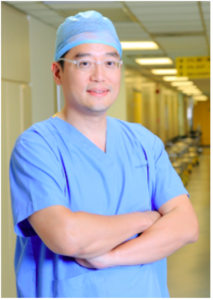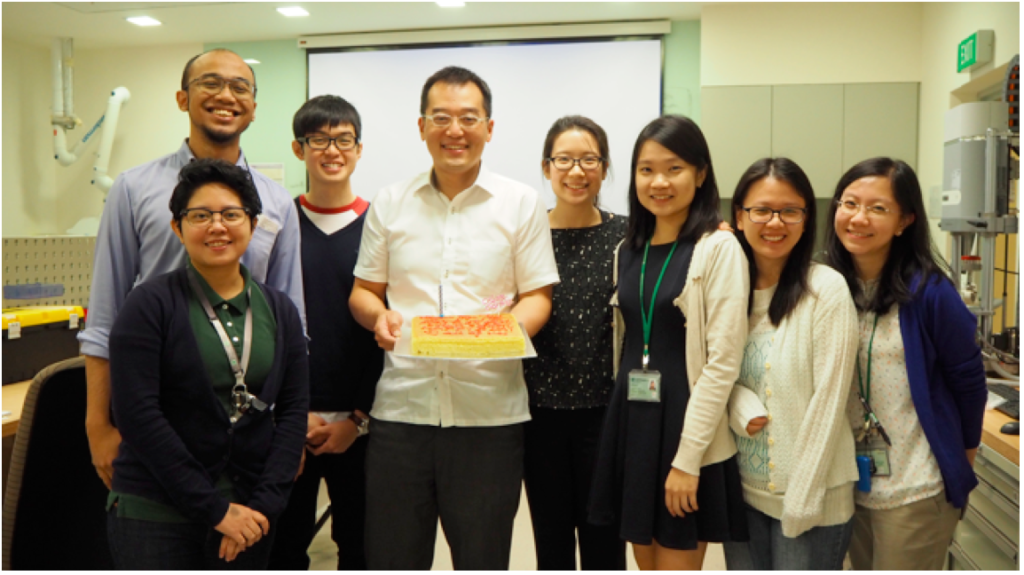Issue 7 – Volume 4 – May 2017
by Mabel Leow

What is the most fascinating aspect of hand surgery?
The scope of hand surgery is very broad. As there are multiple tissue types in the hand, hand surgeons are trained to repair and reconstruct all the tissues in the hand. This includes the bone, joint, ligament, tendon, nerve, blood vessels and skin. We are also trained in microsurgery. The scope and variety of hand surgery is wide. No two operating lists are the same and the types of procedures can range from fracture fixations, to ligament reconstructions, arthroscopic surgery, flap surgery, to microsurgical cases.
Do you think hand surgery should be a standalone from Orthopaedics or Plastics?
General orthopaedic training usually focuses on bone and joints without any significant soft tissue and microsurgical. Plastic surgery training is soft tissue based including microsurgical training but with less emphasis on bone work. If the purpose is to produce a hand surgeon who would be able to manage the entire spectrum of conditions in the hand, it would be better to have a separate hand surgery training program. This early training allows the resident to develop a better and more comprehensive aspect of hand surgery knowledge, and gives trainees the opportunity to be equally adept in both bone and soft tissue work, including microsurgery. At this time, only a few countries such as Sweden, Finland and Singapore, is hand surgery recognized as a clinical specialty in its own right, with a formal four to six years hand surgery resident training program.
Why did you become a hand surgeon?
I like to use my hands and as such, I chose surgery over medical specialities. After completing my surgical training, I narrowed my options down to Orthopaedics and Hand Surgery. I chose Hand Surgery over Orthopaedics as I felt that it had more room for growth compared to Orthopaedics, which was already very well developed by then.
How have you developed your interest in research?
Hand surgery training includes an emphasis on research, and I wanted to go beyond the research training I underwent as a Registrar. As such, after completing my exit certification in hand surgery in Singapore, I applied and was accepted into Mayo Clinic for a 1-year clinical fellowship. The Mayo Clinic has always been a world renowned academic medical centre and the hand surgery division is home to many world famous surgeons. I had the opportunity to work with and learn from the two legends of hand surgery, Professors Ronald Linscheid, and James Dobyns. I was also fortunate enough to even write a paper with Dr Linscheid. My other clinical mentors during my clinical fellowship include professors Allen Bishop, Alexander Shin, William Cooney, Peter Amado, Steve Moran, Robert Beckenbaugh, and Richard Berger.
Thanks to the support of the faculty there, in particular Professor William Cooney, I was able to follow up my clinical fellowship with a two year postdoctoral research fellowship in the Mayo Clinic Biomechanics Laboratory under Professor An Kai-Nan. During this time, I also completed my Postdoctoral Masters Degree in Clinical Research with Professor Richard Berger as my mentor.
What is most challenging aspect of your clinical work?
Communication is fundamental to providing good patient care. The most challenging aspect of clinical work, not just for hand surgery, is patient communication. It is important to be able to communicate to patients in a way that they can understand their condition, treatment options, and outcome. This is especially true in highly specialised fields like hand surgery where the patients have very little pre-existing knowledge.
When did your interest in biomechanics research begin?
It started when I was working in the Biomechanics Laboratory at Mayo Clinic. I had the honour and privilege to spend two years there and during that time I was exposed to many eminent faculty and fellows from all over the world who shared their experience, knowledge, and friendship. Biomechanics research is mostly quantitative and logical. The ability to quantify and measure forces and motion, in bones, tendons and ligaments etc, appeals to me. Fundamentally, what drives me is the wonder about how the physical structures in our hand and wrists work, and how we can make our surgeries work better.
How do you balance clinical and research work?
My department gives its consultants some sessions which are protected for research, education, and administration. This is very important as it allows clinicians to be more academic. I view research as an important and critical complement to my clinical work as much of the research that I do is directly applicable to my clinical work.
Which do you enjoy more, surgery or research?
I enjoy both! There is great satisfaction when a surgery is done well. At the same time, I find research stimulating as it allows me to discover new knowledge. I also find great joy and inspiration in mentoring committed medical students in research, providing guidance, resources and supporting their endeavours.
What do you look for when recruiting junior staff?
Willingness and ability to commit to hand surgery. There are many ways this commitment can be assessed prior to selection. I find that the best way is by giving the student or resident a project/s and observing how they handle obstacles, difficulties, failures, criticisms and rejections. Many students are outcome-focused, and think that they have not done well if they did not manage to get their project published. What I look for however is their attitude and work ethics during the entire process rather than the final outcome.

Photo: A/Prof Tay also heads the Biomechanics Laboratory at SGH.
Mabel Leow is a first year student with a keen interest in hand surgery.